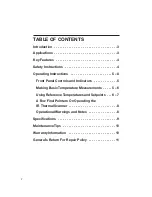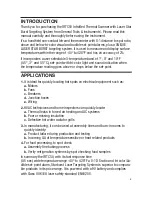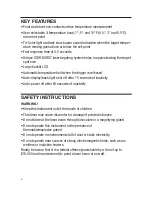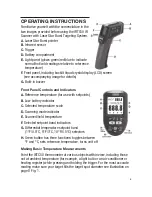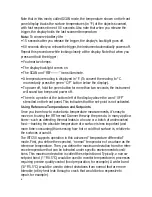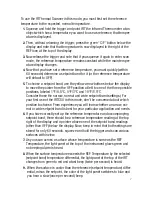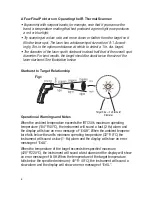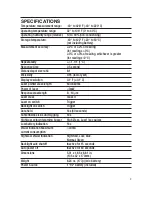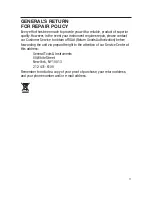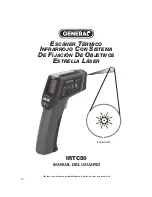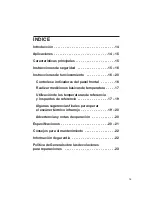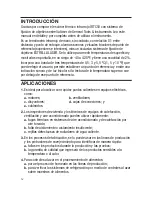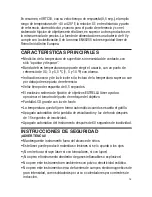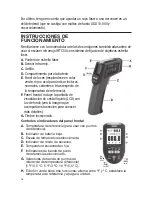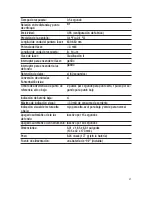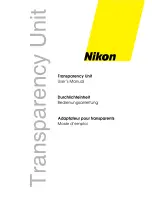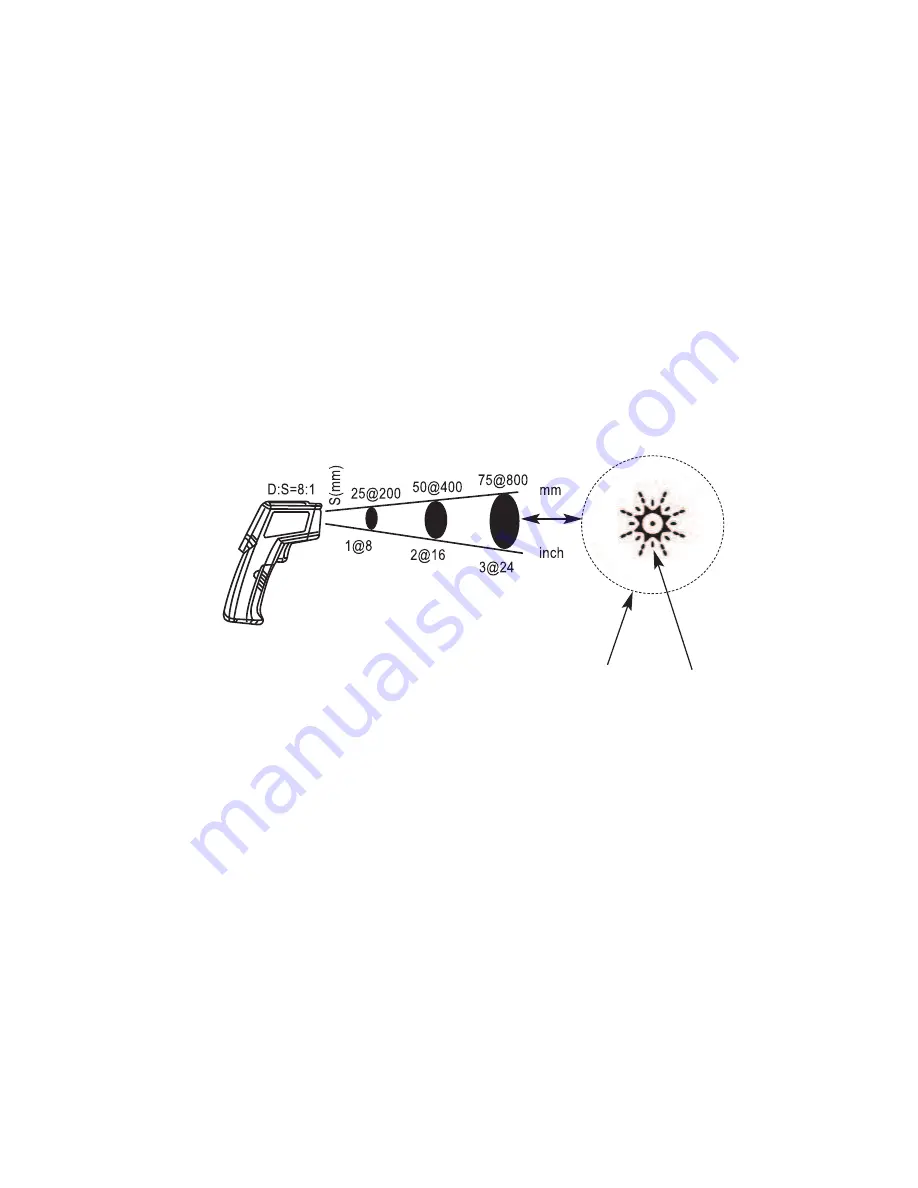
A Few Final Pointers on Operating the IR Thermal Scanner:
• Experiment with setpoint bands, for example, note that if you narrow the
band, a temperature reading that had produced a green light now produces
a red or blue light.
• Try scanning at a slow rate, and move closer or farther from the target so it
fills the laser spot. The laser has a distance/spot size ratio of 8:1. Accord -
ingly, 8 in. is the optimum distance at which to detect a 1 in. dia. target.
• The diameter of the laser spot’s starburst is about half that of the overall spot
diameter. For best results, the target should be about twice the size of the
laser starburst. See illustration below:
Starburst to Target Relationship
Operational Warnings and Notes
When the ambient temperature exceeds the IRTC50’s maximum operating
temperature (104°F/40°C), the instrument will sound a fast (2-Hz) alarm and
the display will show an error message of “ErAH”. When the ambient tempera-
ture falls below the unit’s minimum operating temperature (32°F/0°C) the
instrument will sound a slow (1-Hz) alarm and the display will show an error
message of “ErAL”.
When the temperature of the target exceeds the specified maximum
(428°F/220°C), the instrument will sound a fast alarm and the display will show
an error message of ErOH. When the temperature of the target temperature
falls below the specified minimum (-40°F/-40°C), the instrument will sound a
slow alarm and the display will show an error message of “ErOL”.
8
Fig.1
Target Size = 2x Starburst
Diameter


